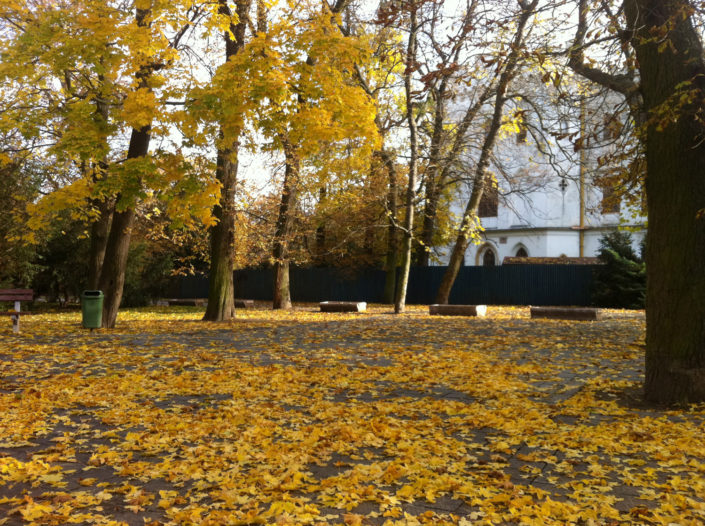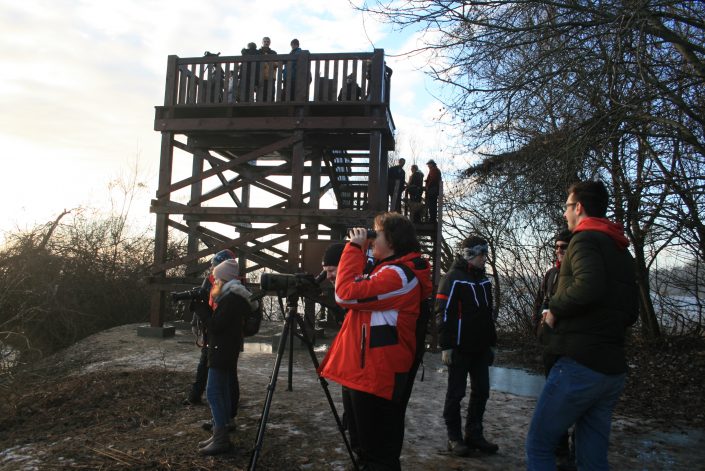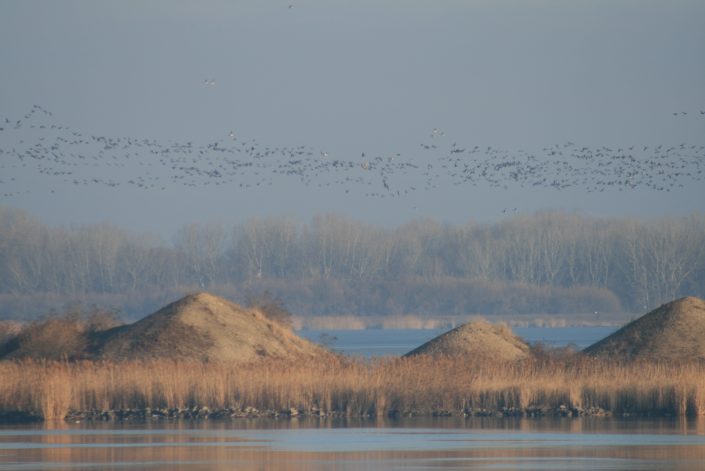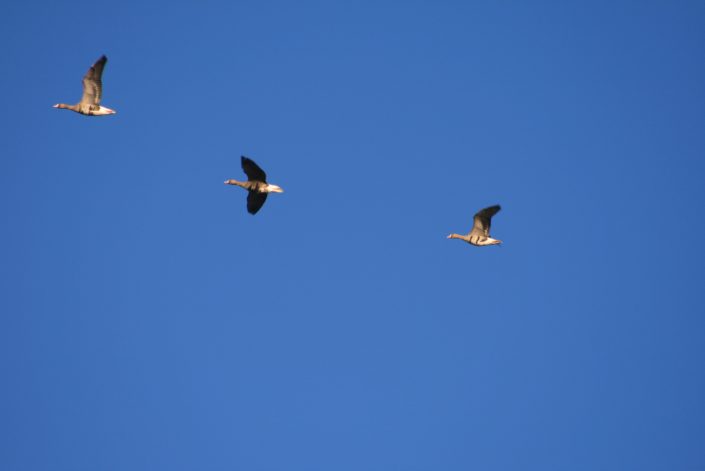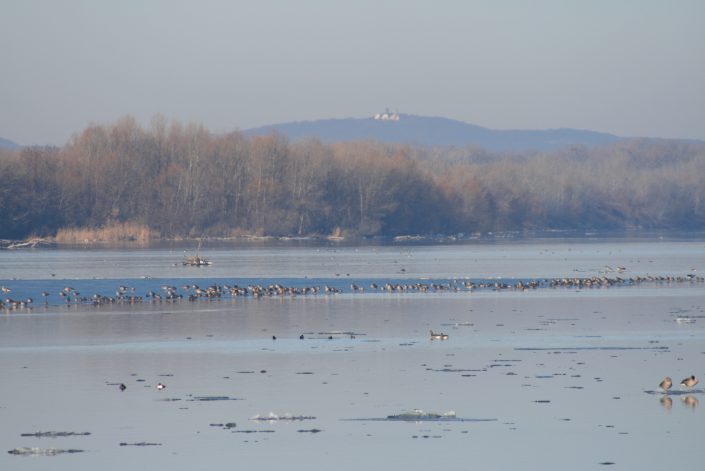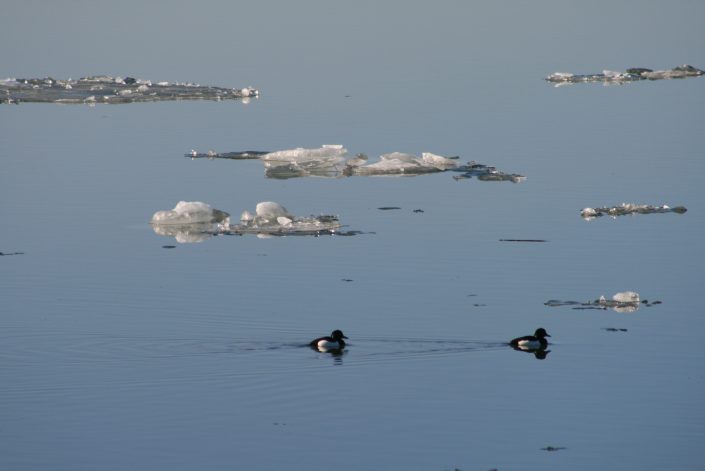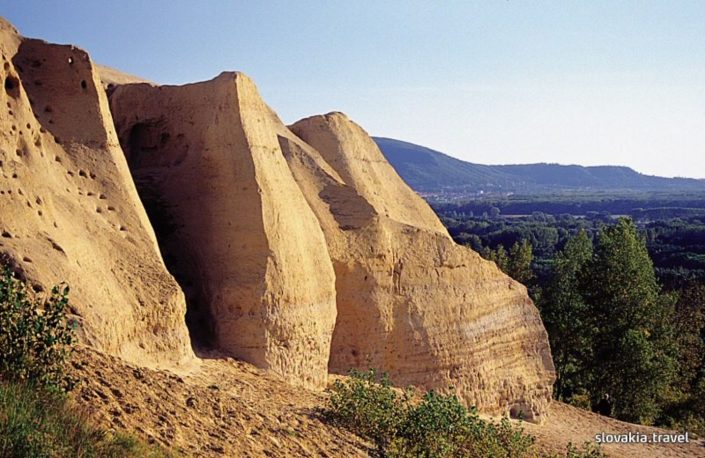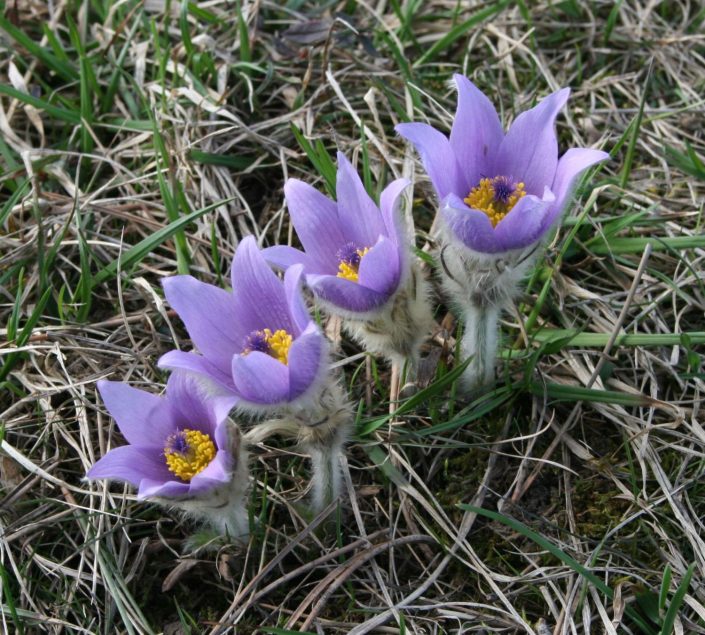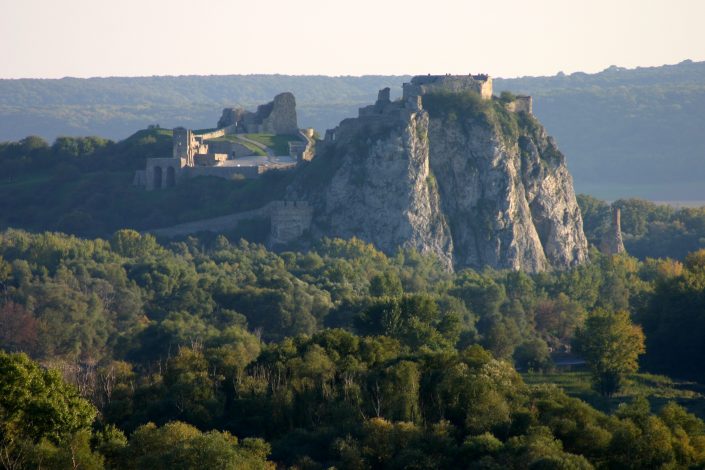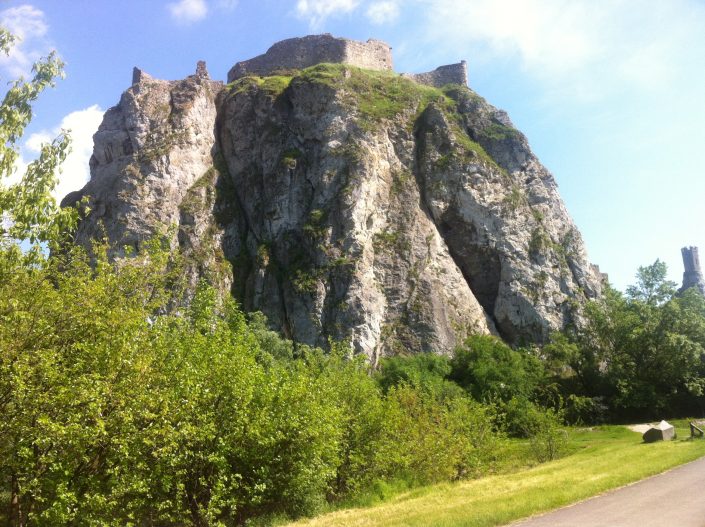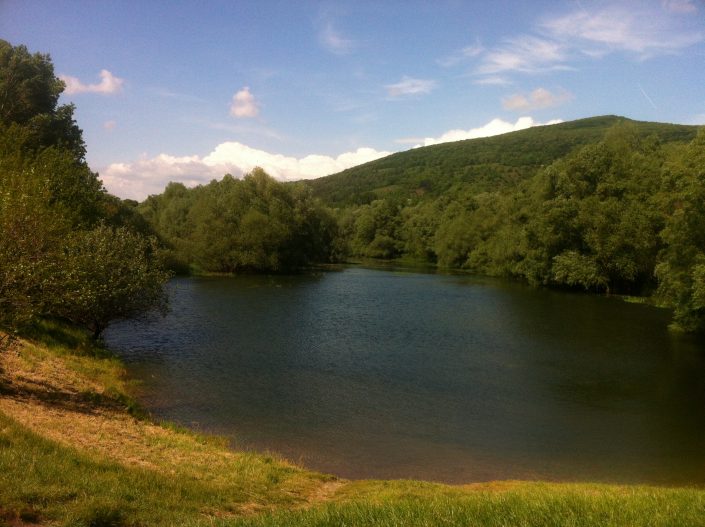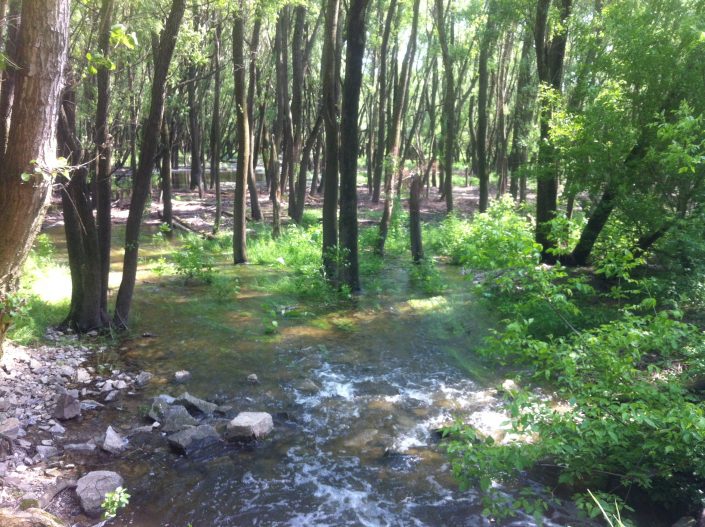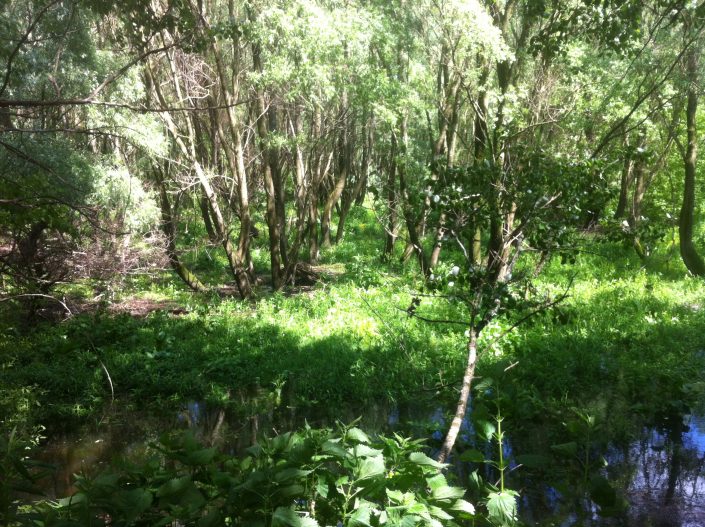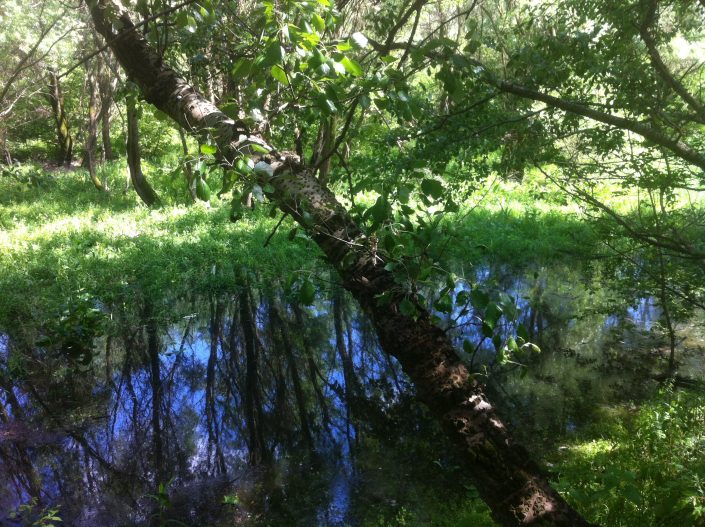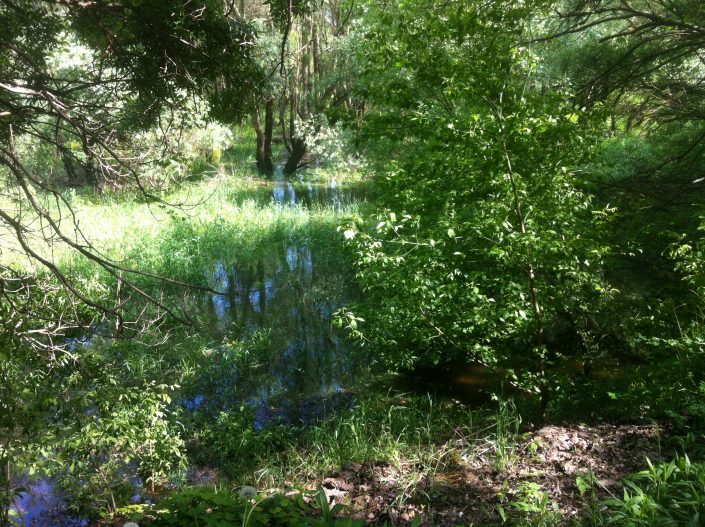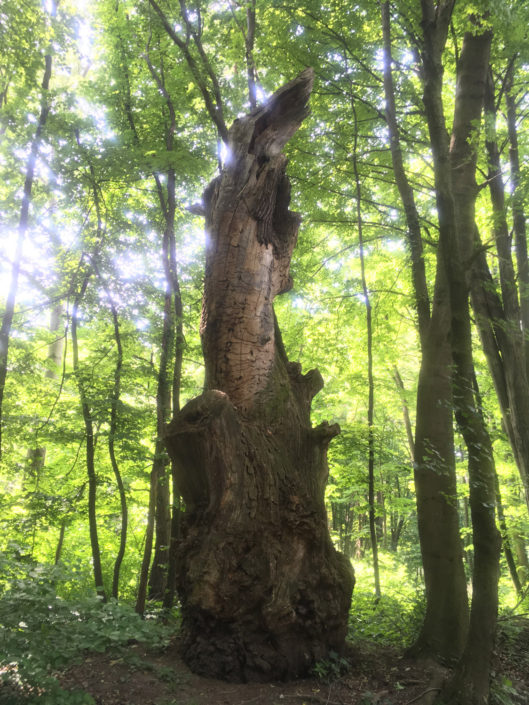Birdwatching at the edge of three states
Half-day experience
Bratislava is the only capital in the world, which is located directly on the intersection of three independent states. Moreover, within its city limits you will find natural protected areas. Fantastic flora and fauna lies directly at your foot! We can offer you various half-day trips focused on the birdwatching and experiencing the beauty of a local nature depending on a season.
1. Wintering birds of Danube (from October – until April)
A tour in winter time takes us to the southern edge of the capital city to Rusovce borough. We pass Rusovce Mansion and its 24 km² large English park, as well as rather older Ancient Roman military camp – Kastel Gerulata, a National Cultural Monument. But the main target is, indeed, to watch Great Bustard at the Protected Area of Sysľovské polia (Sysľovské fields). Great Bustard belongs to the heaviest flying birds in the world. Males could weigh up to 22 kilograms. It has also large wingspan that reaches almost 2, 7 meters. In Bratislava, you can find it inside city limits. The bird is very shy; it is often difficult to see him closer than 500 meters away. If we will not be lucky, the path takes us further through alluvial forest to Hrušovská zdrž, huge water reservoir on the Danube river, the most important wintering place for some species of the waterbirds in Central Europe! Beside thousands of wintering Tufted Ducks, Goldeneyes, Pochards or Mallards it is possible to spot some less usual species as Greater Scaup, Velvet Scoter, Long-tailed Duck or Red-Breasted Merganser. Several Slovak rarities are found here as well – Dalmatian Pelican, Common Eider, Great Northern Loon. Danube and its surroundings provide good conditions for breeding and wintering of White-Tailed Eagle. Hrušovská zdrž is a part of hydro-engineering structure Gabčíkovo with the Dam; the location is rather unique itself, especially in wintertime. If needed, we can end a trip warming up in Danubiana.
2. Treasury of diversity of species (from March – until August)
National Nature Reserve Devínska Kobyla is mountainous area right next to the place where two rivers merge: Danube and Moravia. Small suburb village Devín is in 30 minutes drive from the city center, however, you will find yourself in a completely different world. This area is a unique mosaic of steppe, forests, meadows, old quarries and river side with exceptional botanical, zoological, geological and paleontology values. It is important xerothermic community with rich presence of protected and endangered species, in addition with important paleontology location called Sandberg. We can watch steppe habitats here, orchid meadows, many endemic animal and plant species, rare insects, high diversity of snakes, butterflies, and flowers. 119 bird species have been recorded in this small area, 84 of them breeding, such as White Stork, Honey Buzzard, Eagle Owl, Bee-Eater, Black Woodpecker, Jackdaw, and Barred Warbler. View from the top Devínska Kobyla is fascinating – you see a rock with old Devín Castle located on confluence of two rivers. If thirsty, we can end up enjoying local Currant Vine.
3. Moravia Wetlands (from February – to October: if not flooded)
Morava floodplain is unique biosphere along Danube and Moravia rivers. Previously a strictly patrolled territory on the border of Slovakia with Austria had therefore a chance to preserve its rich flora and fauna without disturbance. Today three protected natural areas, some expanding to neighboring Austria, are preserving this special heritage.
Danube and Moravia domains are mixture of alluvial forests, wet meadows, oxbow lakes and agricultural landscape. The untouched and beautiful landscape provides a shelter for breeding of water birds, roosting site for migrating geese. When on bike, we can cross the Moravia River and visit nearby Marchegg, Austria, with a nickname Stork-town. On the route we will visit Devín Castle on the Slovak, and/or Schloss Hof Castle on the Austrian side.
The birds we can watch in this area are: Black Stork, Western Great Egret, Garganey, Honey Buzzard, White-tailed Eagle (Imperial Eagle), Black Kite, Saker Falcon, Middle Spotted Woodpecker (Green Woodpecker), Grey-headed Woodpecker, Black Woodpecker, Grasshopper Warbler (River Warbler), Savi’s Warbler, Great Reed Warbler, and Barred Warbler.
We prepare these trips in cooperation with highly specialized and experienced guides; provision of basic birdwatching equipment is an option.
Transportation can be arranged by bus + walking and/or biking. Good shoes and proper clothing are highly recommended.
This tour can be extended to a day trip, combining more birdwatching locations, depending on a season and a time available. Additionally, it can be enriched by other incentive tours, such as Danubiana or Currant Vine.


